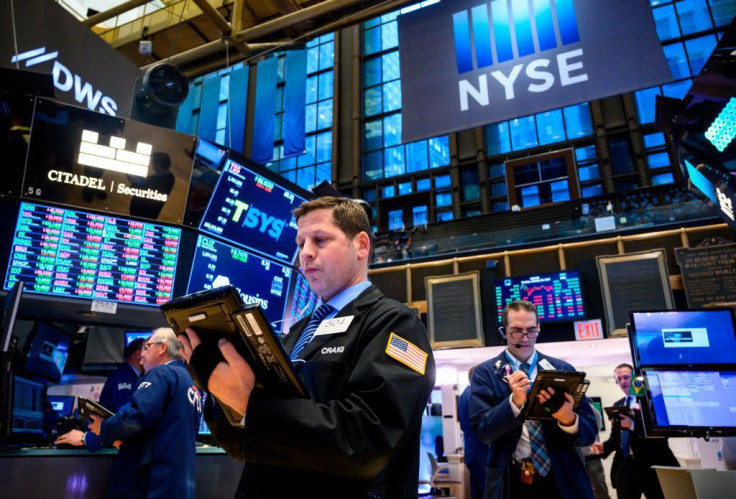Friday's Stock Market Open: Shares Rise On Jobs Report, Interest Rate Hopes

Stocks opened higher Friday as the Labor Department announced the unemployment rate was at a half-century low and hopes mounted for an interest rate cut at the end of the month intensified.
At midday, all three major U.S. indexes were up nearly a point, the Dow Jones Industrial Average was up 240 points, to 26,440, or 0.92%. The S&P 500 gained 28 points to 2,938, up 0.96%, and the Nasdaq Composite added 78 points to 7,949, or 0.98%.
The Bureau of Labor Statistics reported the September unemployment rate declined to 3.5%, its lowest level since December 1969, and employers added 136,000 jobs, in line with Thursday’s 135,000-job estimate by ADP. The unemployment rate was 0.2% lower than August’s rate, and the number of jobs created in July and August was revised upward by 45,000.
Reports earlier this week from the Institute for Supply Management on both the manufacturing and services sectors indicated the economy is slowing, sparking hopes among traders for a quarter-point drop in interest rates at the U.S. Federal Reserve’s next Open Markets Committee meeting Oct. 29-30.
Aldis Birkans, chief financial officer of National Bank Holdings, said, however, cutting rates may actually slow the economy further by making banks reluctant to lend money at a rate that cuts into profits.
“By cutting rates, the Fed is also directly cutting the profitability of the vast majority of U.S. banks just when monetary conditions had returned to more normal levels following the 2007-08 financial crisis,” Birkans said in an opinion piece published by MarketWatch. He noted the cost of borrowing is not a major concern for most businesses. The overriding concern is over tariffs on Chinese goods.
“Most of those banks rely on the simple difference between the rate they charge for loans and the rate they pay depositors for 70%-80% of their revenue,” Birkans said. “That spread collapsed after the financial crisis as the Fed cut rates to zero. … So when the Fed changed course and cut rates this year in an environment where it does not necessarily stimulate more credit generation, the banks now have a choice to make — lower profitability, decrease deposit rates or preserve profitability by turning away some loans.”
Global markets were mostly higher.
Hong Kong’s Hang Seng closed 1.11% lower and China’s Shanghai Composite was down 0.92% while Japan’s Nikkei 225 rose 0.32%. Australia’s S&P/ASX was up 0.37%.
London’s FTSE c;psed 1.1% higher while the German DAX rose 0.73% and the French CAC was up 0.91%.
The British pound was off 0.19% at $1.23 while the euro ticked up 0.09% to $1.0975. The dollar index was up 0.02%.
Oil futures were higher. Crude oil added 44 cents to $52.89a barrel. Brent crude traded at $58.43 a barrel, up 72 cents. Gold and silver were lower.
© Copyright IBTimes 2024. All rights reserved.




















